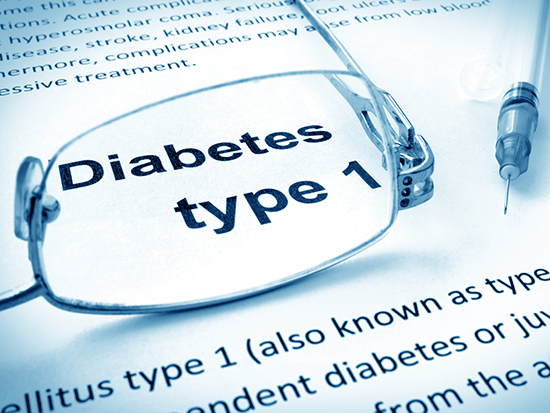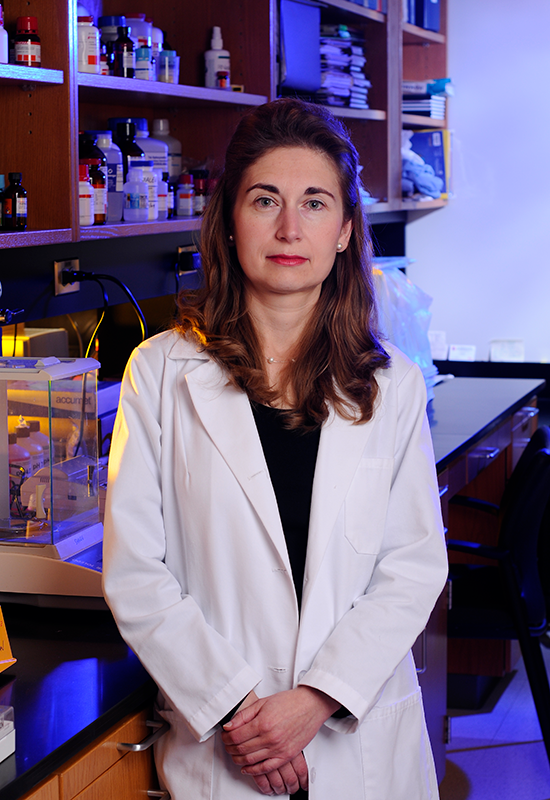 These results add an additional, mechanistic aspect to further explain how the decades-old blood pressure medication verapamil can preserve beta cell function in Type 1 diabetes patients by affecting the hormone insulin-like growth factor 1.In 2012, University of Alabama at Birmingham researcher Anath Shalev, M.D., reported that a decades-old blood pressure medication called verapamil completely reversed diabetes in animal models. In 2018, the team had translated these findings into a randomized, controlled, clinical trial, demonstrating significantly improved beta cell function for one year in human subjects with recent onset Type 1 diabetes. By last year, in a small follow-up study, Shalev and colleagues had found that adult Type 1 diabetes patients taking oral verapamil required less daily insulin and showed evidence of beneficial immune modulation for as long as two years after first diagnosis.
These results add an additional, mechanistic aspect to further explain how the decades-old blood pressure medication verapamil can preserve beta cell function in Type 1 diabetes patients by affecting the hormone insulin-like growth factor 1.In 2012, University of Alabama at Birmingham researcher Anath Shalev, M.D., reported that a decades-old blood pressure medication called verapamil completely reversed diabetes in animal models. In 2018, the team had translated these findings into a randomized, controlled, clinical trial, demonstrating significantly improved beta cell function for one year in human subjects with recent onset Type 1 diabetes. By last year, in a small follow-up study, Shalev and colleagues had found that adult Type 1 diabetes patients taking oral verapamil required less daily insulin and showed evidence of beneficial immune modulation for as long as two years after first diagnosis.
Now UAB researchers, led by Guanlan Xu, Ph.D., and Shalev drilled down further into the mechanism underlying verapamil’s beneficial effect. In a paper published in Diabetes, they show that, in Type 1 diabetes patients, verapamil prevented the decline of the hormone insulin-like growth factor 1, or IGF-1, as compared to controls who did not take verapamil. They also found that verapamil promotes IGF-1 signaling in pancreatic beta cells.
Type 1 diabetes is an autoimmune disease that causes loss of the pancreatic beta cells that produce insulin. To replace that insulin — the hormone that helps control blood sugar — patients must take exogenous insulin by shots or a pump and are at risk of dangerous low blood sugar events. There is no current oral treatment for this disease.
Besides Shalev’s adult study, a recent independent study of children with Type 1 diabetes has also confirmed that verapamil preserves beta cell function, compared with children not taking verapamil.
In the Diabetes study, Xu, Shalev and colleagues did a global proteomics study analysis of serum samples from Shalev’s adult study both at baseline and at one year of receiving verapamil or a placebo. They found 59 proteins showed significant changes in abundance over time, and one of the top five differentially changed proteins was IGF-1. The placebo group showed a significant decline of IGF-1 from baseline to one year, but that decline was blunted in the verapamil group.
Others have found that serum IGF-1 correlates with residual beta cell function, a correlation the UAB researchers also found for the verapamil group, as measured by retention of the ability to produce endogenous insulin by the beta cells that are located in pancreatic islets.
 Anath Shalev, M.D.RNA sequencing of samples of human pancreatic islets treated with or without verapamil showed that the expression of four IGF binding proteins was significantly decreased by verapamil. Such a decrease in proteins that bind to IGF-1 should allow IGF-1 to interact with its IGF-1 receptor. Binding of IGF-1 to the receptor initiates the IGF-1 signaling pathway that alters gene expression inside the beta cell. As a measure of increased signaling, the researchers indeed found that verapamil did activate the IGF-1 receptor and its downstream effector, AKT, as measured by increased phosphorylation of both.
Anath Shalev, M.D.RNA sequencing of samples of human pancreatic islets treated with or without verapamil showed that the expression of four IGF binding proteins was significantly decreased by verapamil. Such a decrease in proteins that bind to IGF-1 should allow IGF-1 to interact with its IGF-1 receptor. Binding of IGF-1 to the receptor initiates the IGF-1 signaling pathway that alters gene expression inside the beta cell. As a measure of increased signaling, the researchers indeed found that verapamil did activate the IGF-1 receptor and its downstream effector, AKT, as measured by increased phosphorylation of both.
In contrast, in human islets that were treated with Type 1 diabetes-associated inflammatory cytokines, as well as islets from a mouse model of Type 1 diabetes, researchers found significantly increased expression of IGF binding protein 3, which is the most abundant of the IGF binding protein family. These results suggest that islet expression of IGF binding proteins is upregulated under Type 1 diabetes conditions.
The Shalev team previously has shown increased beta-cell expression of TXNIP — a protein that promotes programmed cell death and dysfunction of beta cells — during diabetes. The team has also showed that verapamil inhibits beta-cell expression of TXNIP, resulting in the beneficial anti-diabetic effects. In the current study, the researchers now have shown that overexpression of human TXNIP significantly increased expression of IGF binding protein 3, while TXNIP-deficient islets had decreased expression of IGF binding protein 3. Furthermore, overexpression of TXNIP significantly decreased the phosphorylation activation of the IGF-1 receptor.
“Thus, our results reveal IGF-1 signaling as yet another previously unappreciated pathway affected by verapamil and TXNIP that may contribute to the beneficial verapamil effects in the context of Type 1 diabetes,” Shalev said.
At UAB, Shalev is director of the UAB Comprehensive Diabetes Center and a professor in the Department of Medicine Division of Endocrinology, Diabetes and Metabolism. Xu is an instructor in the Department of Medicine Division of Endocrinology, Diabetes and Metabolism and a scientist in the UAB Comprehensive Diabetes Center.
Co-authors with Xu and Shalev in the study, “Verapamil prevents decline of IGF-1 in subjects with T1D and promotes beta-cell IGF-1 signaling,” are Junqin Chen and Brian Lu, UAB Department of Medicine, Division of Endocrinology, Diabetes and Metabolism; Praveen Sethupathy, Cornell University, Ithaca, New York; and Wei-Jun Qian, Pacific Northwest National Laboratory, Richland, Washington.
Support came from National Institutes of Health grants DK078752 and DK122160, and from a UAB Diabetes Research Center Pilot and Feasibility Award. Human pancreatic islets were provided by the National Institute of Diabetes and Digestive and Kidney Diseases-funded Integrated Islet Distribution Program at City of Hope, Duarte, California.
At UAB, Shalev holds the Nancy R. and Eugene C. Gwaltney Family Endowed Chair in Juvenile Diabetes Research. Medicine is a department in the Marnix E. Heersink School of Medicine.